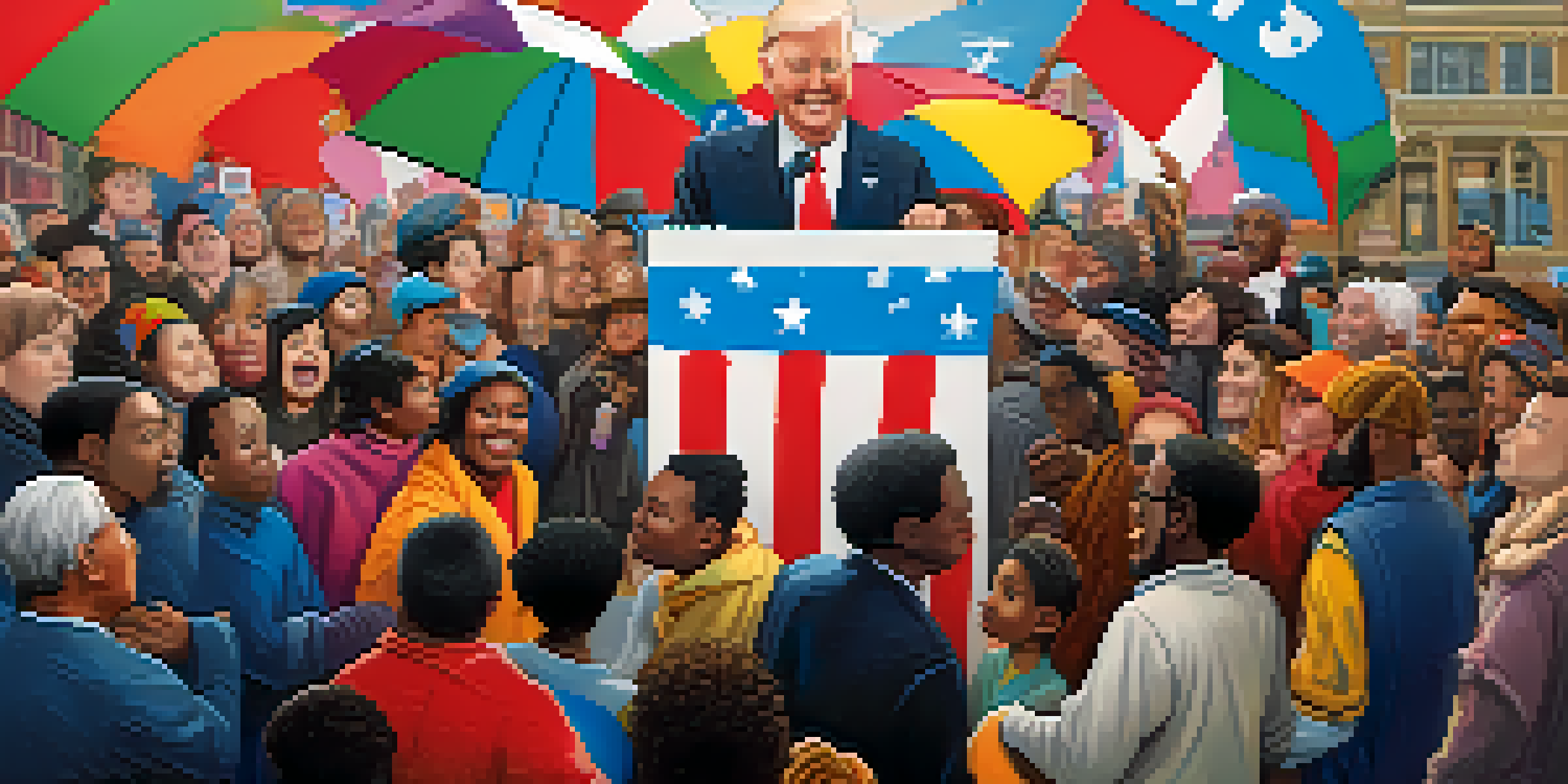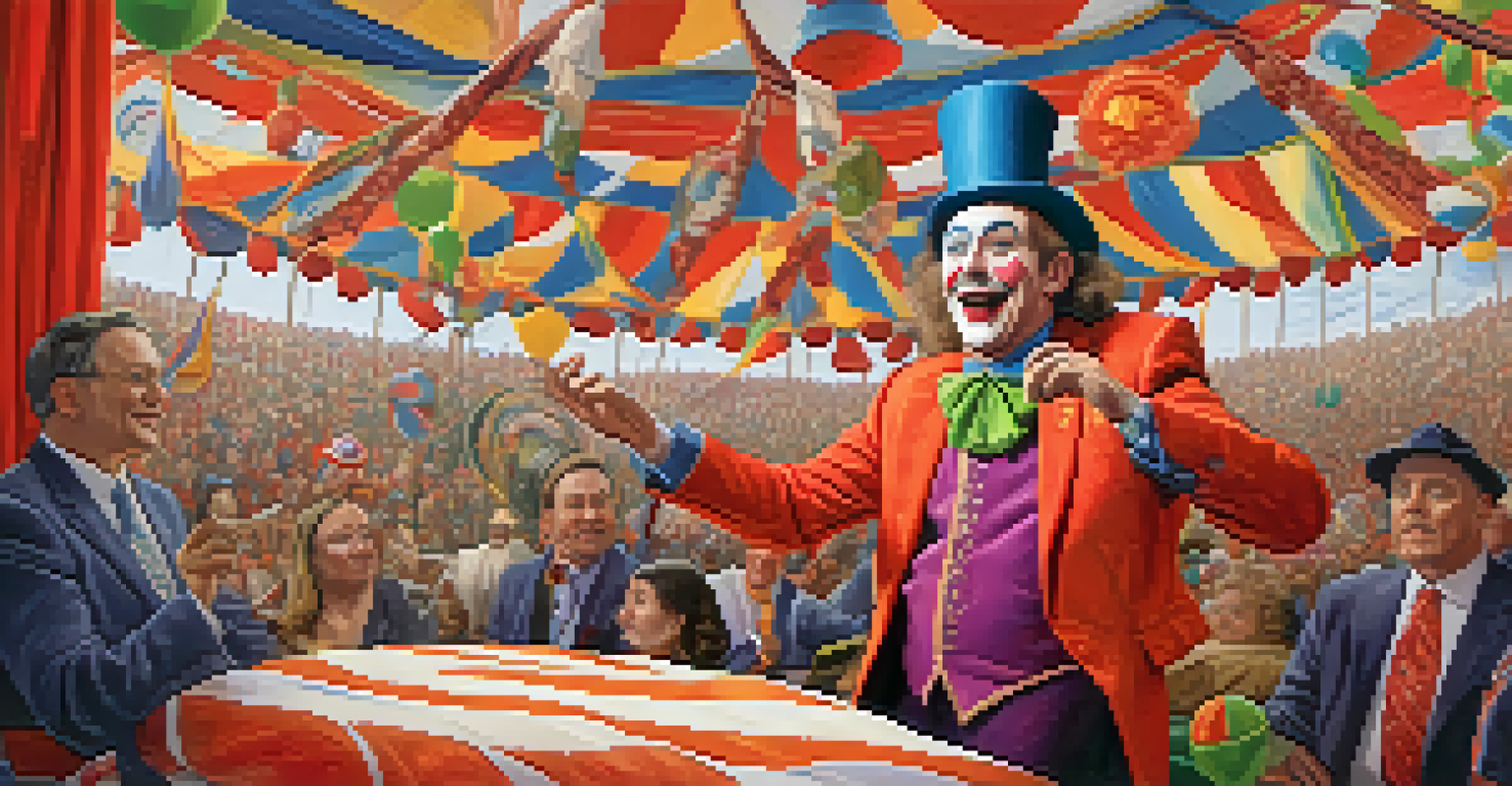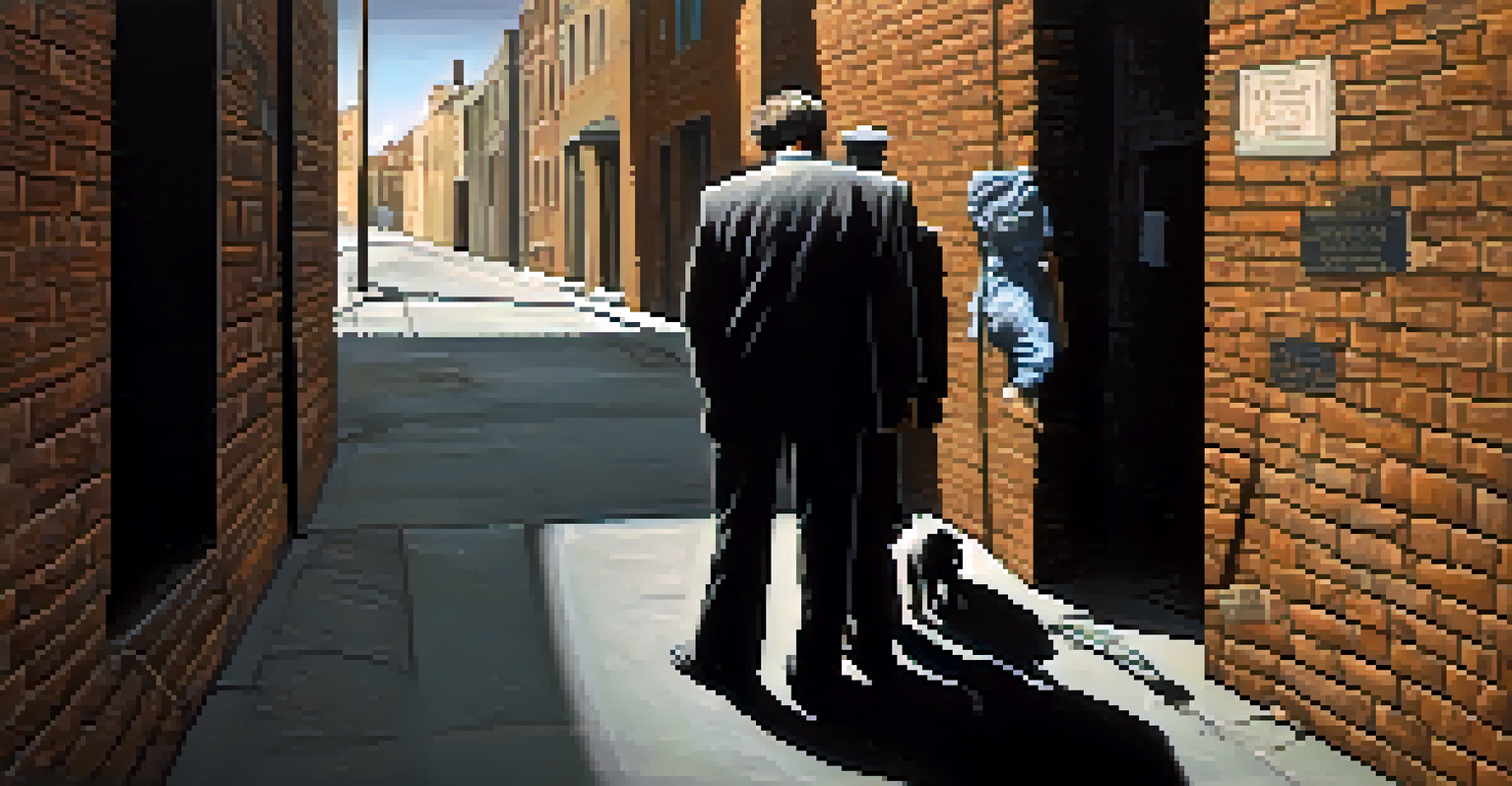How Political Cartoons Influence Public Opinion Through Art

Understanding Political Cartoons and Their Purpose
Political cartoons are a unique blend of art and commentary, often using humor to convey complex ideas. They serve as a visual shorthand, summarizing political events or social issues in a way that is accessible to a wide audience. By distilling intricate topics into a single image, these cartoons can provoke thought and discussion among viewers.
A political cartoon is a visual representation of a political event or social issue, often infused with humor, that inspires discussion and reflection.
The primary purpose of a political cartoon is to critique or highlight aspects of society, government, or politics. They can make the audience laugh, frown, or even feel anger, but ultimately, they aim to engage the viewer emotionally. This emotional connection is powerful, as it can motivate individuals to reflect on their beliefs and opinions.
Moreover, political cartoons have a rich history, dating back to the 18th century. Artists like James Gillray and Thomas Nast used their craft to influence public sentiment during significant historical moments. Today, this tradition continues, adapting to modern platforms like social media, where their reach can be even broader.
The Role of Satire in Political Cartoons
Satire is a key element in political cartoons, allowing artists to critique authority and societal norms. By exaggerating traits or actions of political figures, cartoons can reveal truths that might be harder to express in straightforward commentary. This humor often invites viewers to reconsider their perspectives and question the status quo.

For instance, a cartoon depicting a politician as a clown might not just be funny; it could also imply that the politician is unfit for their role. This clever use of satire can resonate deeply with the audience, making them more likely to share and discuss the cartoon. The blend of humor and critique helps to break down barriers, making the message more relatable.
Power of Satire in Cartoons
Satire allows political cartoons to critique authority and societal norms, inviting viewers to question the status quo through humor.
Additionally, satire can highlight hypocrisy or absurdity in political actions. When a politician is shown doing something contradictory to their stated beliefs, it creates a moment of realization for the viewer. This is where the power of cartoons lies—they can encapsulate complex ideas in a manner that prompts reflection and conversation.
Visual Imagery: The Language of Political Cartoons
Visual imagery is crucial in political cartoons, as it communicates messages quickly and effectively. A single image can evoke a strong reaction, often more so than a lengthy article might. This instant impact is essential in a world where attention spans are short, making cartoons an efficient form of commentary.
Satire is a powerful weapon in the hands of the artist, capable of provoking thought and challenging the status quo.
Colors, symbols, and caricatures play significant roles in conveying messages. For example, a red elephant might represent the Republican Party, while a blue donkey symbolizes the Democrats. These visual cues act as shorthand for viewers, allowing them to grasp the underlying message without needing extensive background knowledge.
Moreover, the use of exaggeration in caricatures helps to emphasize specific traits or behaviors of individuals. This technique not only enhances the humor but also underscores the cartoonist's perspective. As a result, viewers are more likely to remember the cartoon and its message, reinforcing its influence on public opinion.
Emotional Appeal: Connecting with the Audience
Political cartoons often leverage emotional appeal to engage viewers on a deeper level. By tapping into feelings like anger, frustration, or even joy, these cartoons can motivate individuals to take action or reconsider their stance on an issue. This emotional connection is what makes cartoons particularly effective in shaping public opinion.
For example, a cartoon depicting the struggles of everyday citizens can evoke empathy and urgency from the audience. When people see their own experiences reflected in art, it can inspire them to engage more actively in political discussions or movements. The cartoon serves as a catalyst for connection and awareness.
Emotional Connection with Audience
Political cartoons engage viewers emotionally, motivating them to reflect on their beliefs and take action on social issues.
Additionally, the relatability of certain themes—like economic hardship or social injustice—can resonate powerfully with audiences. When a cartoon captures the essence of a shared struggle, it can unite people and galvanize them to advocate for change. This emotional engagement is often what drives the success of political cartoons in influencing public opinion.
The Impact of Social Media on Political Cartoons
Social media has transformed the way political cartoons are created, shared, and consumed. Platforms like Twitter and Instagram allow cartoonists to reach a global audience instantly, amplifying their message. This accessibility means that a single cartoon can go viral, influencing public opinion at an unprecedented scale.
The immediacy of social media also encourages rapid responses to current events. Cartoonists can create timely content that comments on breaking news, keeping the audience engaged and informed. This responsiveness allows political cartoons to remain relevant and impactful in an ever-changing political landscape.
Moreover, social media facilitates interaction between cartoonists and their audience. Viewers can share their thoughts, reactions, or even criticisms, fostering a dialogue around the issues presented. This two-way communication enhances the overall influence of political cartoons, as they become part of a larger conversation about societal challenges.
Case Studies: Famous Political Cartoons and Their Effects
Throughout history, certain political cartoons have made a significant impact, shaping public opinion and sparking discussions. For instance, Thomas Nast's cartoons in the 19th century played a crucial role in the downfall of corrupt political figures, such as William 'Boss' Tweed. Nast's powerful imagery helped to mobilize public outrage and demand change.
More recently, cartoons commenting on contemporary issues like climate change or immigration have also garnered attention. These works often highlight the urgency of these matters, encouraging viewers to take action or reconsider their positions. For example, a cartoon illustrating the effects of climate change on vulnerable communities can evoke a sense of responsibility in the audience.
Impact of Social Media Today
Social media has transformed political cartoons, enabling rapid sharing and interaction that amplifies their influence on public opinion.
These case studies illustrate the lasting power of political cartoons to influence public discourse. By capturing the zeitgeist of their times, these artworks not only engage viewers but also push them to think critically about important social issues.
The Future of Political Cartoons in a Changing Landscape
As the political landscape continues to evolve, so too will the role of political cartoons. With the rise of digital media and changing consumption habits, cartoonists are adapting their methods to reach new audiences. This shift opens up exciting possibilities for creativity and expression in conveying political commentary.
Emerging technologies, like animation and virtual reality, may also change how cartoons are experienced. Imagine a cartoon that combines traditional art with interactive elements, engaging viewers in a dynamic way. Such innovations could enhance the emotional impact and broaden the appeal of political commentary.

Ultimately, the enduring power of political cartoons lies in their ability to reflect societal sentiments and provoke thought. As long as there are important issues to discuss, there will be a place for these impactful artworks in shaping public opinion.